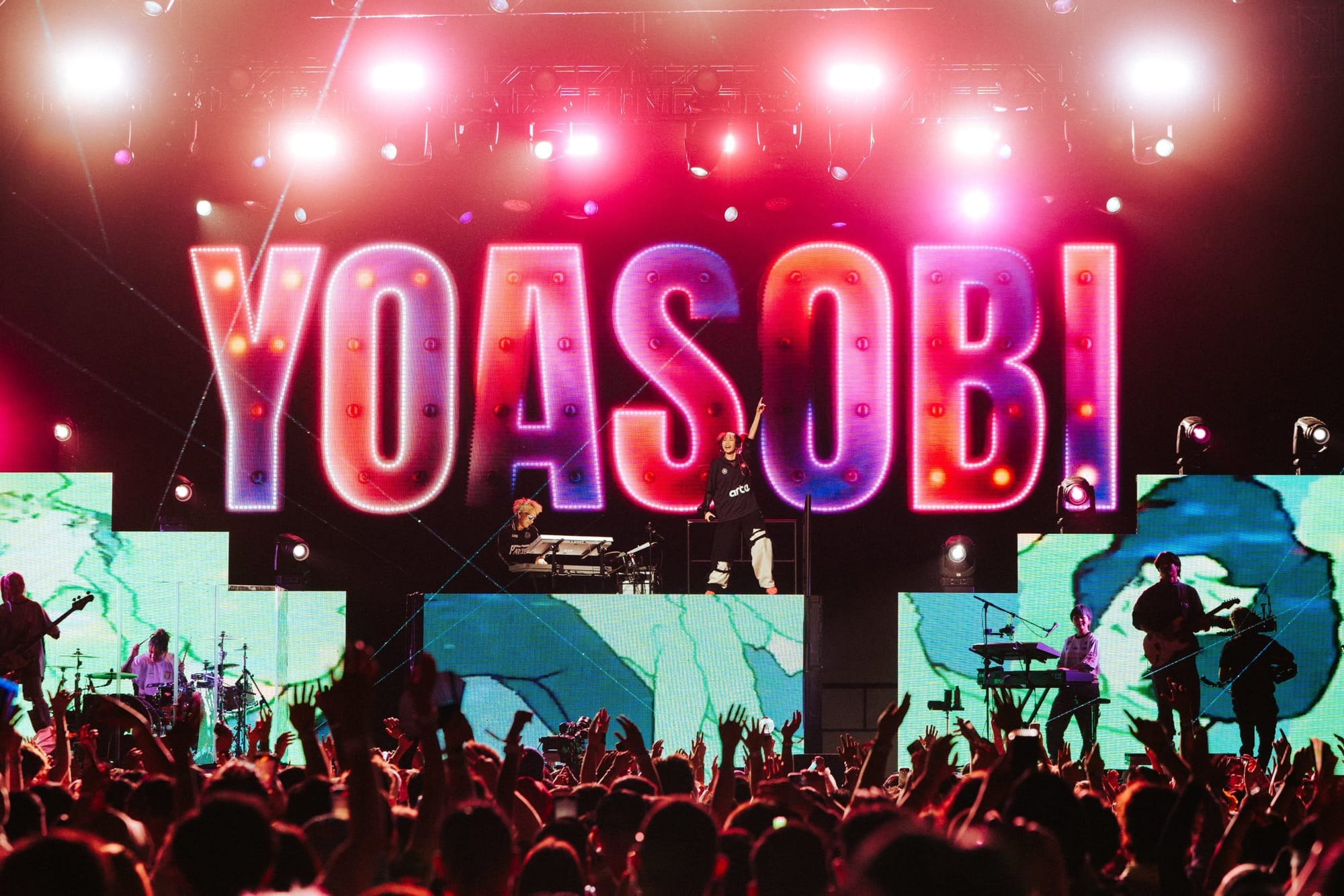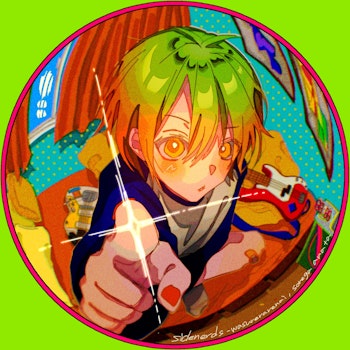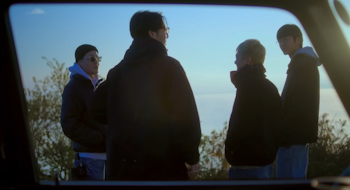
The most surreal moment of Yuki Chiba’s career came last week, when the Japanese rapper strutted onto the stage at the 2024 MTV Video Music Awards. After years of viral songs and attempts at a crossover in the 2010s under the name KOHH, Chiba found himself in New York, in front of a global audience, hyped up by one of the biggest names in American rap.
“All the way from Japan, for the first time…Yuki!” Megan Thee Stallion screamed, as he joined her for a performance of “Mamushi,” a breakout hit from her latest album featuring her and Chiba trading rhymes in his mother tongue. A decade ago, seeing a Japanese artist at an event like this seemed like pure fantasy.
A lot has changed in the 2020s.
This VMAs performance served as a spotlight example of how Japanese music has started gaining momentum on the international stage…and the way artists themselves are embracing the opportunity. This year alone has featured more than enough breakthrough moments. J-pop acts such as Ado, Fujii Kaze and ATARASHII GAKKO! have sold out shows around the world. The duo YOASOBI did the same, while also adding festival appearances to its resume…along with a trip to the White House for a state dinner between the United States and Japan. Hip-hop unit Creepy Nuts’ saw its Jersey Club workout “Bling-Bang-Bang-Born” become a surprise global hit and a defining single of 2024.
These, along with Chiba’s primetime American TV debut, are just some of the marquee happenings in Japanese music this year. The whole story reveals itself across the country’s sonic landscape, from major-label efforts to independent creators. An emerging generation of musicians have appeared this decade, and are finding new perspectives on familiar sounds while forging fresh ones too. They are digital natives, with their artistry shaped by the internet. It’s easier than ever for them to reach an audience…and for listeners to find them.
It wasn’t always this way. The Japanese mainstream industry cultivated an image of being freaked out by the internet, with labels and agencies shying away from the web, surrendering only minute-long “short version” videos to YouTube. Subscription streaming took a while to take hold here. Music companies have long feared ceding control of songs to listeners — even as social media gave fans around the world that very chance during the 2010s.
Yet this digi-phobia ignores a whole alternate pop reality taking off in the late Aughts, and which has become the standard today. Domestic video site Nico Nico Douga allowed a space separate from the mainstream to thrive — primarily online. Artists here might not have had the chart numbers or TV appearances typical of major names, but they had the following of a new generation of listeners. That was especially true of the musical world built from Vocaloid, a singing-synthesizer software turned phenomena thanks to the avatar Hatsune Miku. From here, scenes coalesced around “netlabels” and thrived via emerging platforms like SoundCloud.
The industry itself had plenty of brushes with what was to come — the viral surprise of Kyary Pamyu Pamyu’s “PONPONPON” in 2011, the metal-meets-idol mania of BABYMETAL, and even the oddball Bieber-boosted success of Pikotaro’s “PPAP.” Sudden online interest in older Japanese music from the Showa and Heisei eras caught labels off guard, thanks to fan uploads of songs (sometimes ones that never existed organically, like the mutant seven-minute-plus version of Mariya Takeuchi’s “Plastic Love” haunting YouTube sidebars for years). A shift was inevitable.
It was kids coming up during this period, though, who have re-shaped Japanese music today. A higher-up at a major Japanese music company once told me the eureka moment for his label wasn’t from a suddenly viral song or even unearthed ‘80s pop tune. Nope, it was seeing how young singer-songwriter Aimyon’s Excitement Of Youth never left the top-five album rankings on streaming services such as Spotify and Apple Music in Japan. At the time, the fledgling artists' sales weren’t dazzling on traditional charts. Online however…she was a clear voice of a new generation.
It’s only hastened since, and ushered in a new sonic landscape in the country. The COVID-19 pandemic accelerated the growth as live shows were canceled and physical retailers closed, forcing everyone to go online. The youngsters already accustomed to this reality thrived. Those who grew up alongside Vocaloid — YOASOBI, Ado, Yorushika and many more — captured the anxiety of youth in Japan via discombobulated pop songs. YouTube-raised virtuoso Fujii Kaze offered a brighter, more romantic vision for listeners. Independent acts, meanwhile, embraced internet sounds, emboldened by the global boom in “HyperPop.” They used online channels to thrive…and when the world opened back up, brought the chaos to IRL spaces.
Today, to think of the Japanese music industry as scared of the internet is to be stuck in the past. Save for a few holdouts, major artists and agencies have uploaded entire catalogs to streaming sites, with new digital debuts becoming a practically weekly event (as I write this, male pop group NEWS has come to the medium…all the more impressive as it belongs to what was previously seen as the strictest in terms of this stuff, STARTO fka Johnny & Associates). YouTube and TikTok are central to discovery. It’s true domestically and globally, with no shortage of ways to find a gateway into modern Japanese sound. It could be anime, video games, Bandcamp, a warped TikTok, the YouTube algorithm, a recommendation or seeing an artist grace a stage abroad. It’s not about getting over the wall, but deciding where to go once you walk in through the door.
The thrill of this is the chance to watch all levels of Japanese music grow and change, with the opportunity to discover the corner of it most fascinating to you. scrmbl aims to help listeners find their way around, from the top of the pops to the emerging underground all across the nation, with an emphasis on letting the artist’s voice reach readers all over the world. It’s a new era for Japanese music waiting to be explored. We hope to guide you into this exciting new intersection of sounds and ideas.







